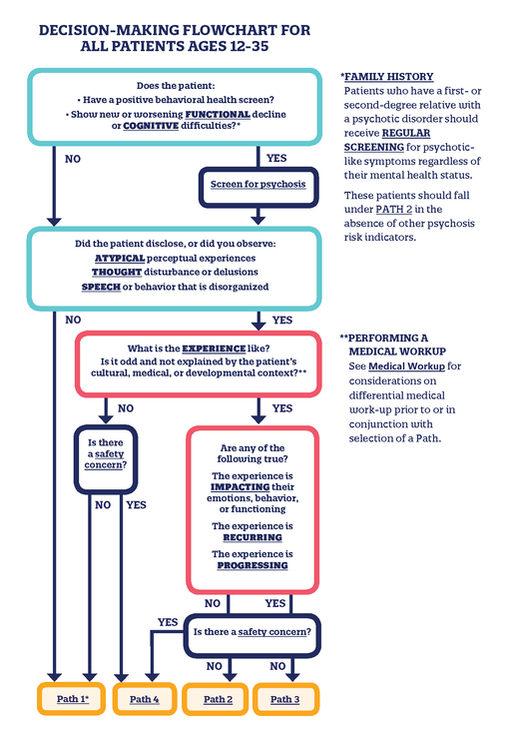PATH 1: reassure & redirect
|
IF
The EXPERIENCE is not psychotic-like/is better explained by:
|
THEN
|
PATH 2: EDUCATE & MONITOR
|
IF
|
THEN
|
PATH 3: specialized ASSESSMENT & TREATMENT
|
IF
|
THEN
|
PATH 4: SAME-DAY ASSESSMENt
|
IF
|
THEN
If these are not sufficiently managed by existing treatment:
|
To choose the appropriate path, consider:1. CONSULTING WITH AN EXPERIENCED MENTAL HEALTH CLINICIAN:
2. CONSULTING NNCPAP (A NATIONAL PSYCHIATRY RESOURCE FOR PCPs) OR ONE OF THE FOLLOWING PSYCHOSIS-SPECIFIC RESOURCES:
3. REFERRING THE PATIENT FOR A COMPREHENSIVE PSYCHOLOGICAL, MEDICAL, NEUROLOGICAL, AND/OR NEUROPSYCHOLOGICAL EVALUATION as indicated by complexity, timing, family history, or symptom combination, details, or atypicality. |





